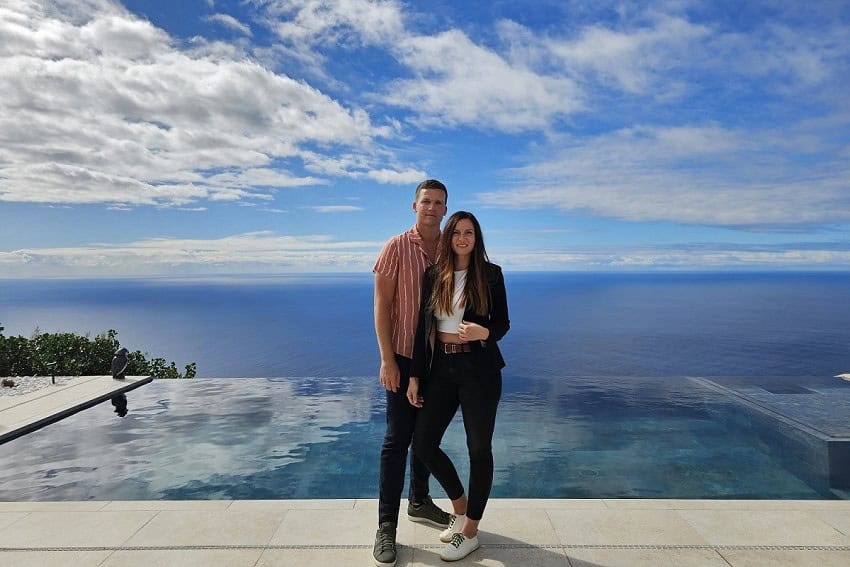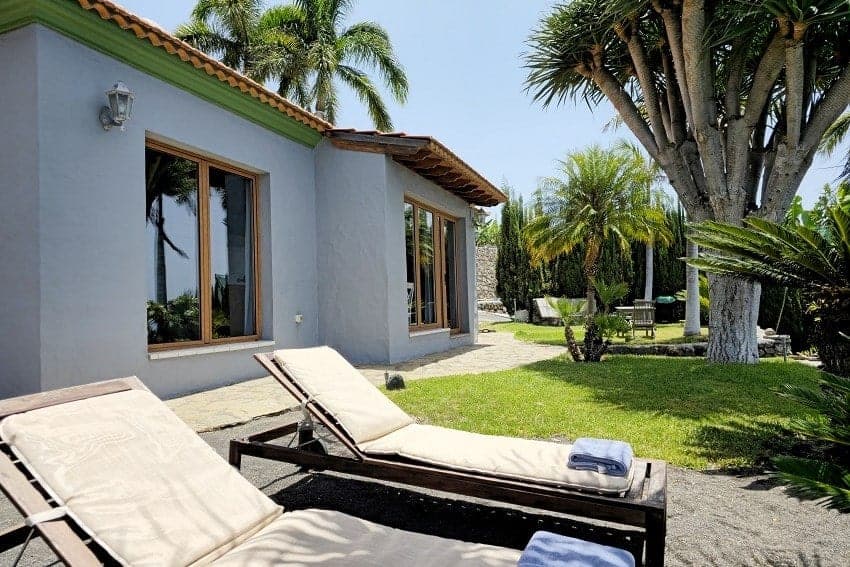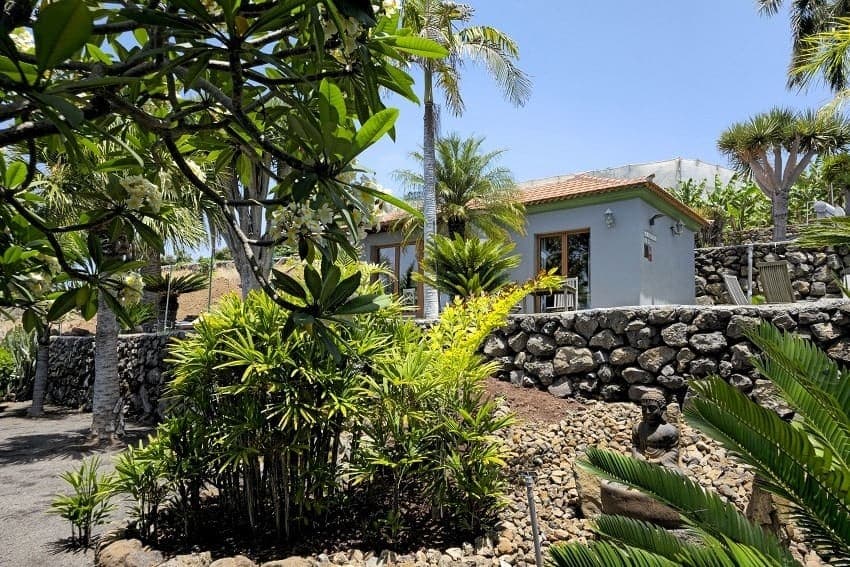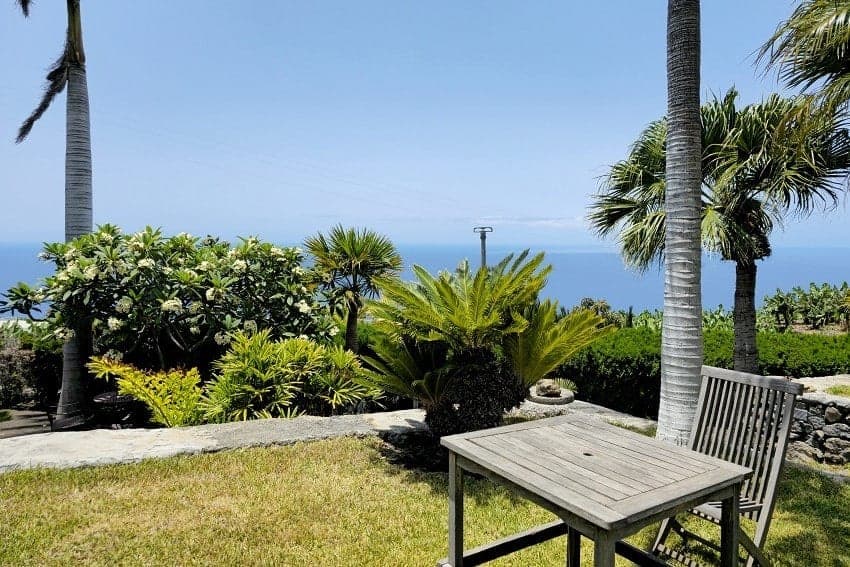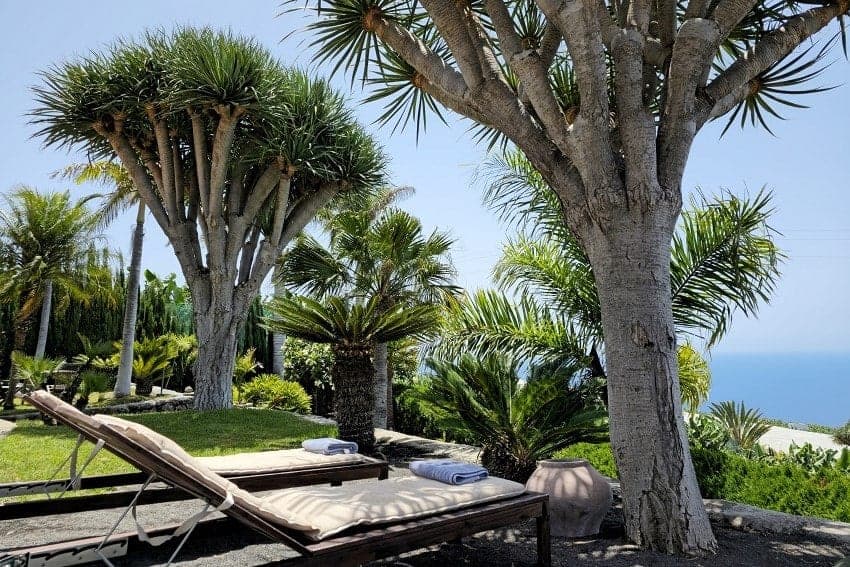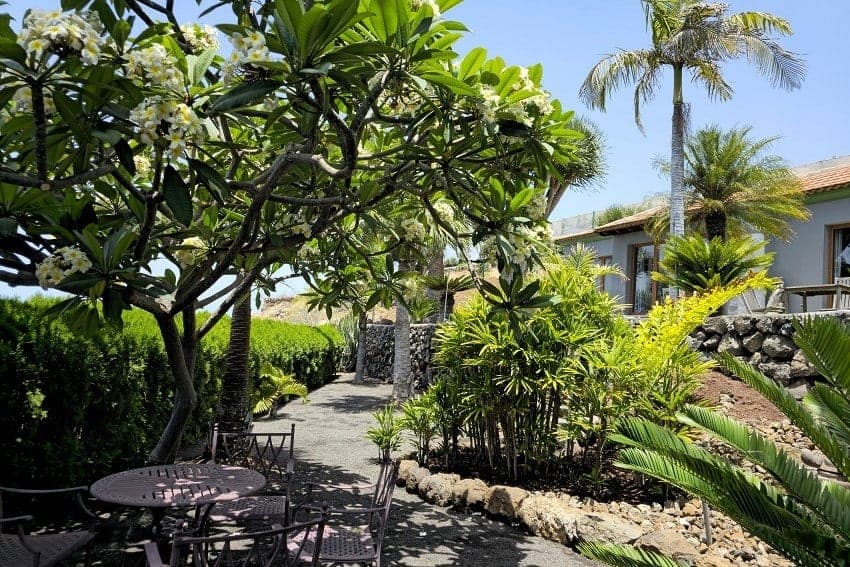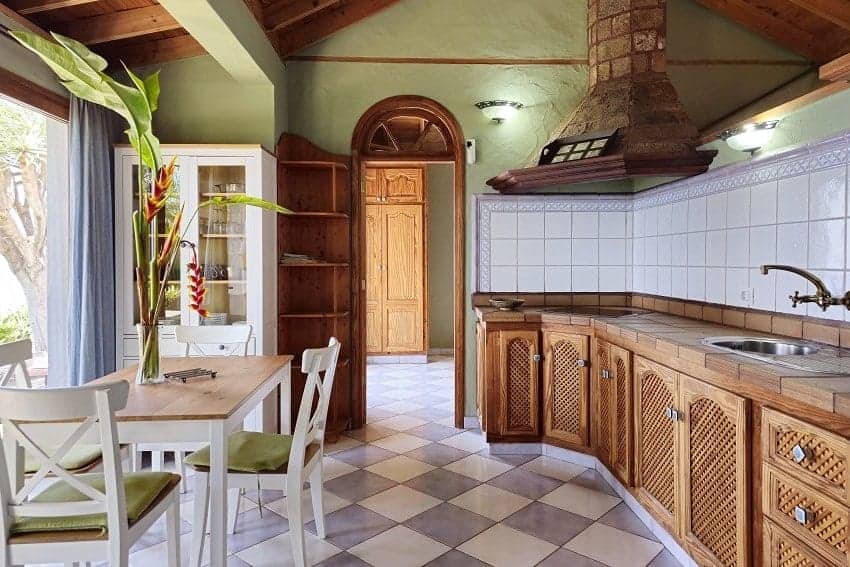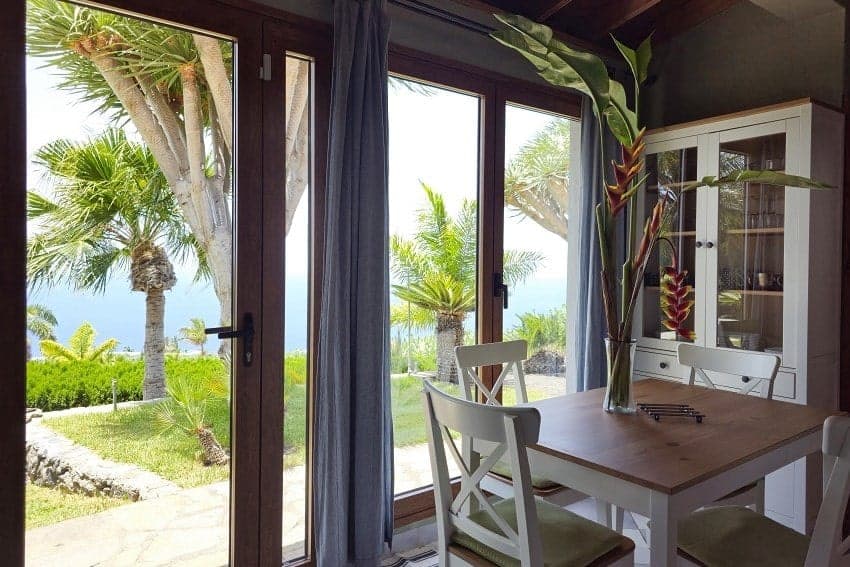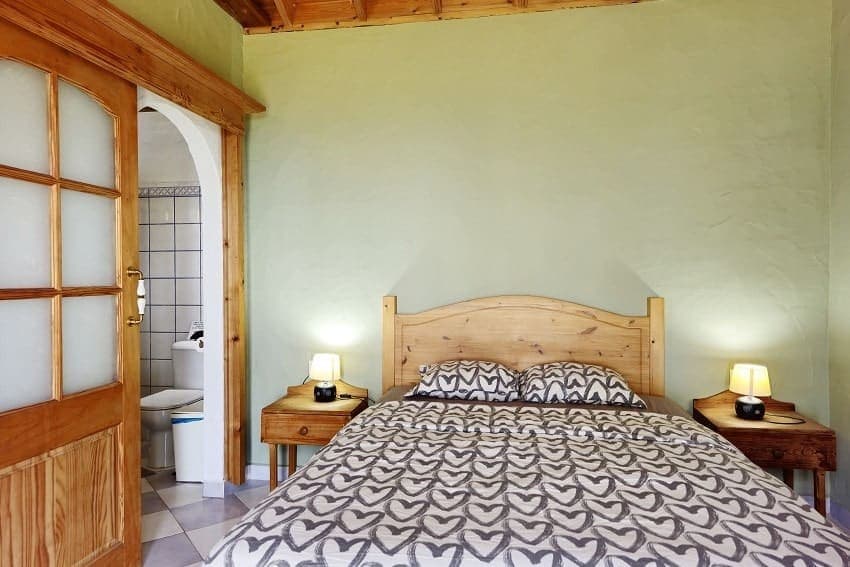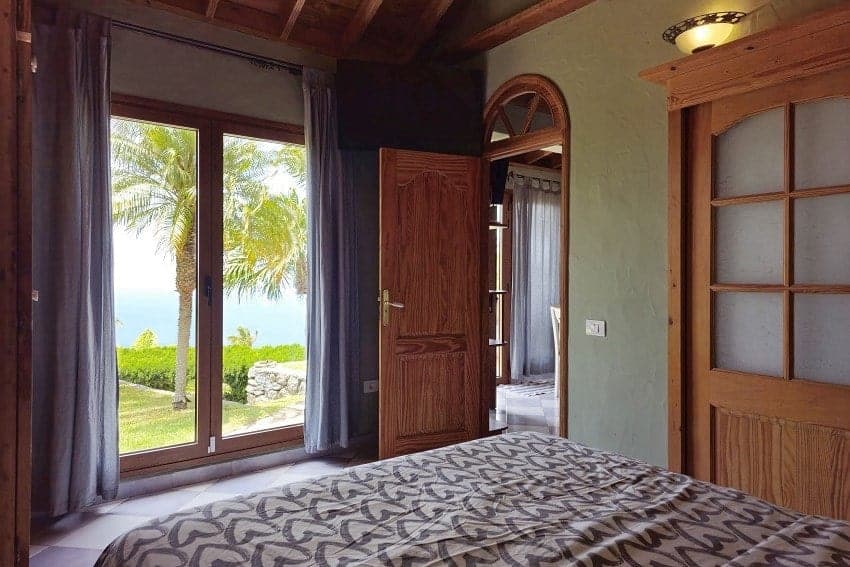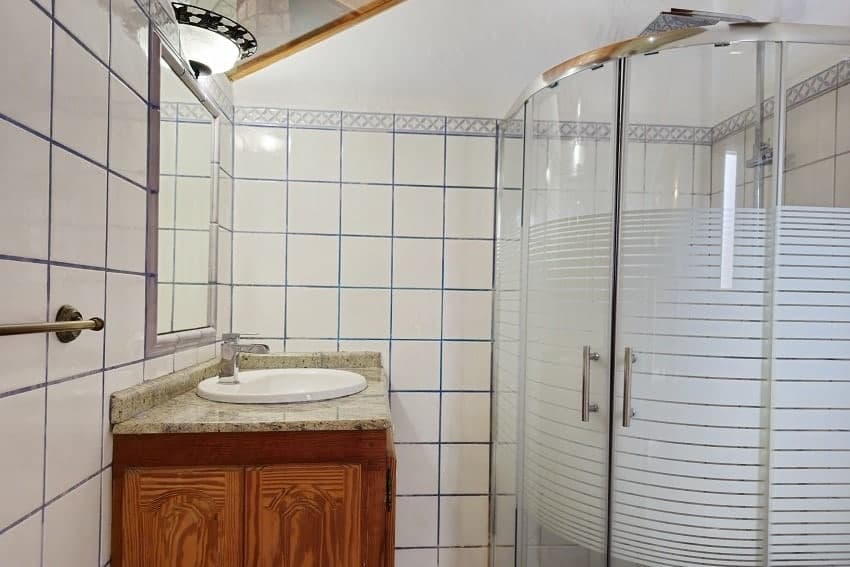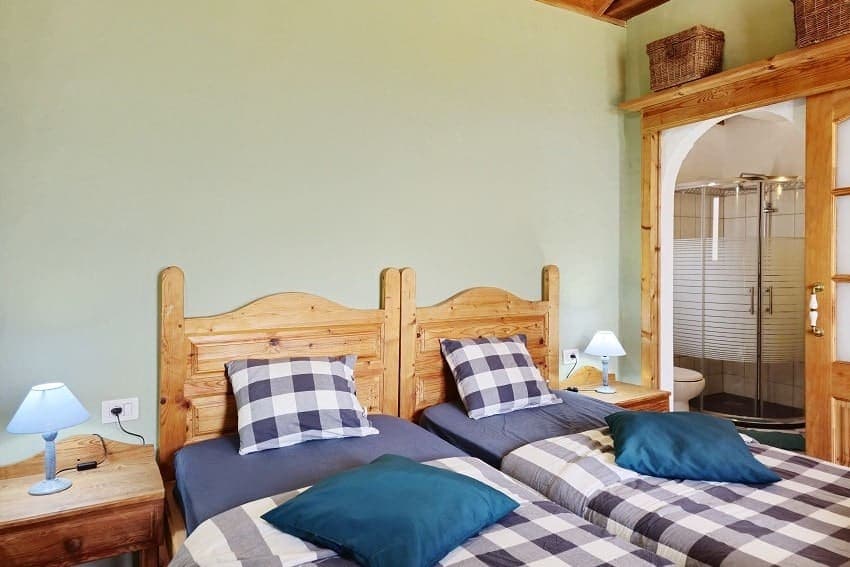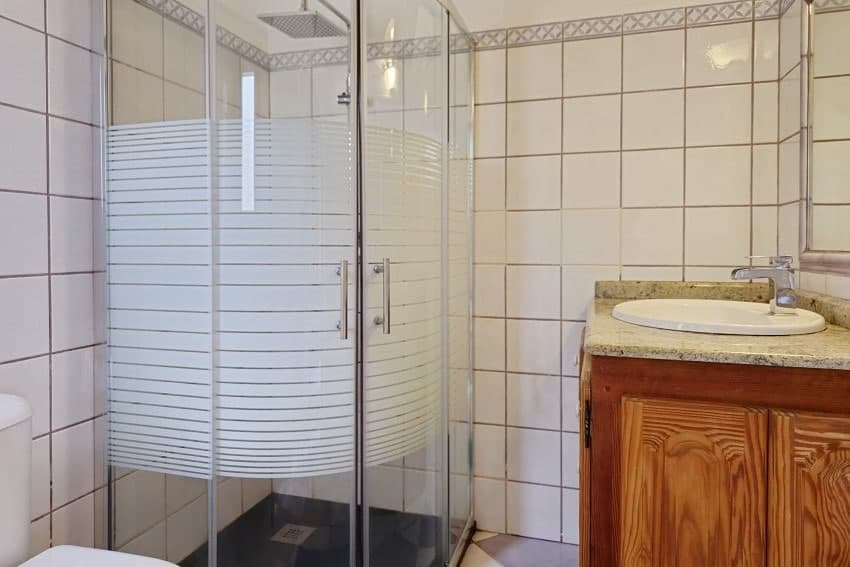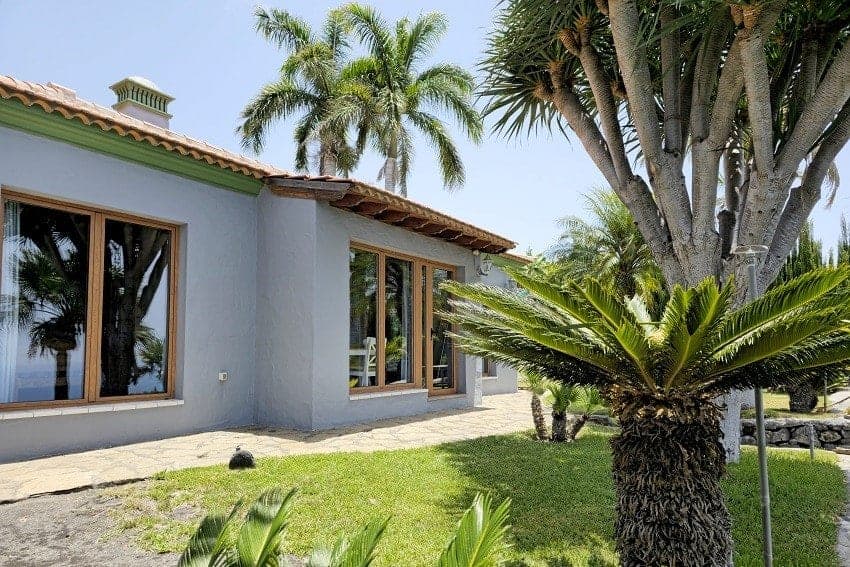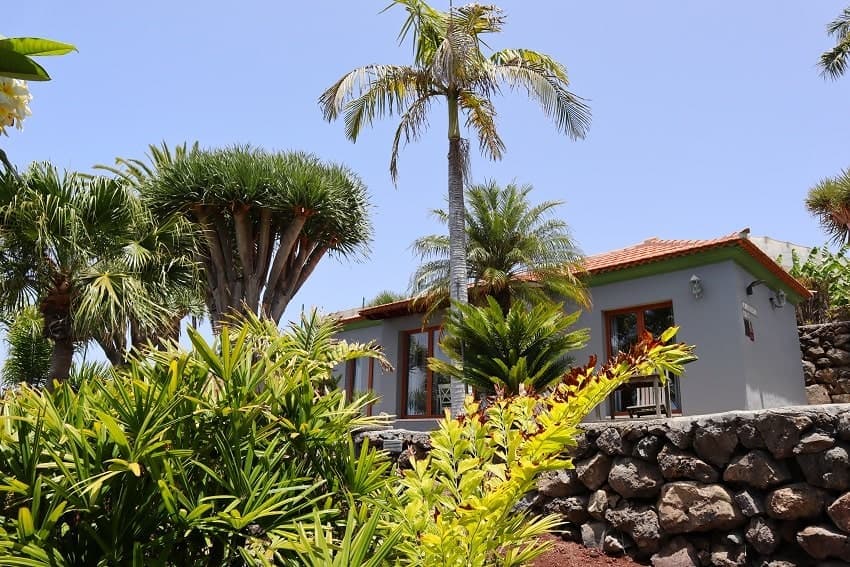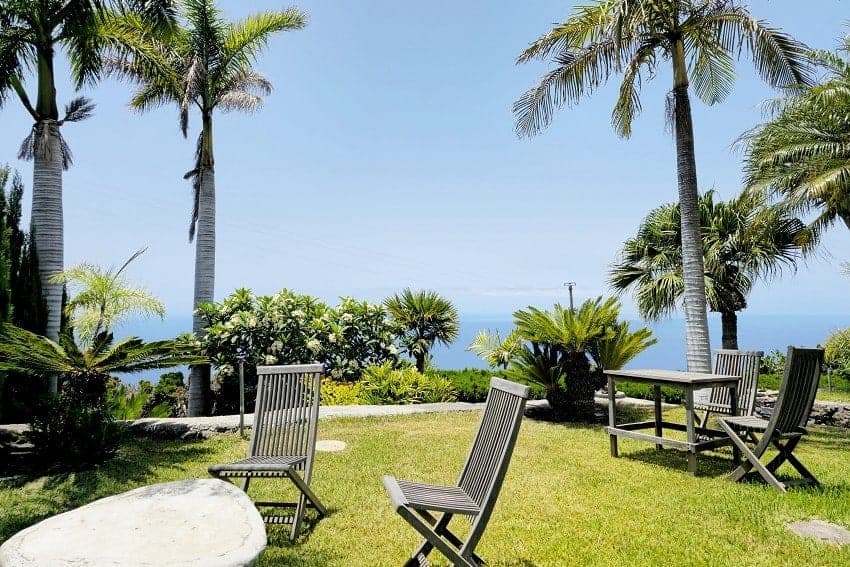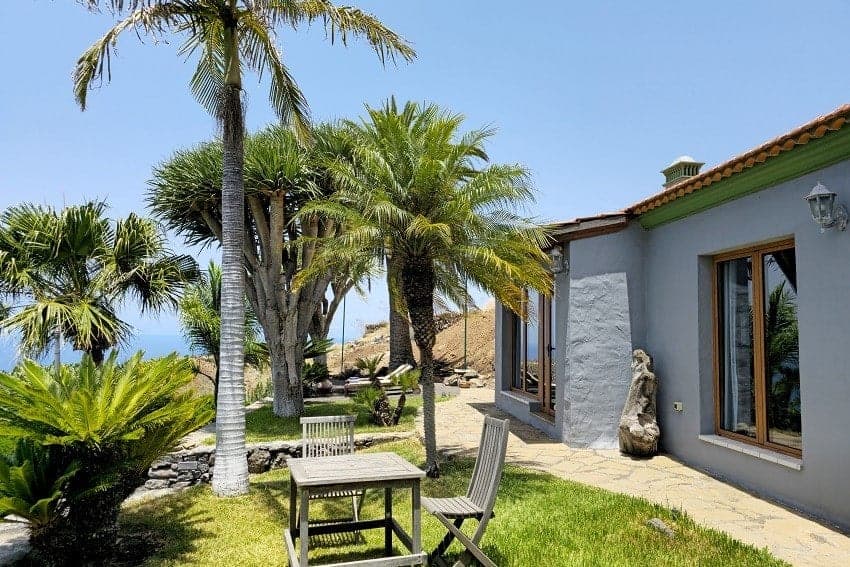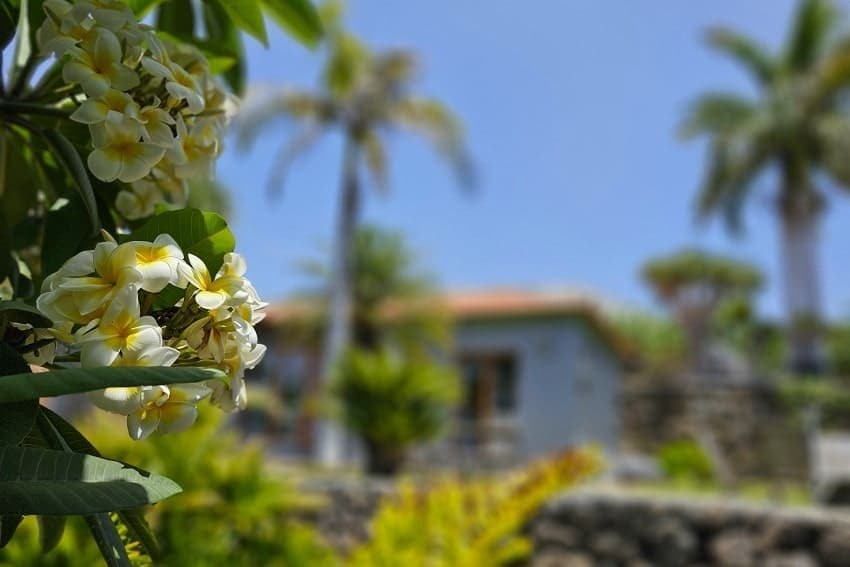Availability
Casa La Gorgonia
 1
1  2 2
2 2 



Idyllic holiday house in the best climate zone of La Palma in La Punta surrounded by a subtropical garden with great sea views in a private setting.
The idyllic and wonderfully quiet Casa La Gorgonia is in the lower part of La Punta on a approx. 400 square meter garden plot with subtropical plants. The paradise-like garden with various palms, dragon trees and Frangipani is not visible from the outside. It offers a fantastic view of the Atlantic Ocean and has various cosy seating areas.
The open cooking, living and dining area inside with its bright and friendly ambience radiates the typical Palmeric hospitality. Each bedroom has an en-suite bathroom with shower. In front of the bright living area there is a natural stone terrace. Enjoy your diner on the dining table and a fabulous view. The sunsets there in the winter months are considered legendary. With a little luck, Casa La Gorgonia even offers the rare opportunity at night to listen to the unmistakable call of the Pardela – the yellow-billed shearwater native to La Palma.
Guests seeking peace and quiet will find in this tranquil refuge an ideal place to slow down.
La Punta is located in the western part of La Palma and is a central starting point for day trips and excursions to La Palma.
Facilities
- 1 Double Bed 150x200
- 2 Bathrooms En-Suite
- 2 Double Bedrooms
- 2 Single Beds 90x200
- Baby Cot
- Bed Linen & Towels are Provided
- Coffee Maker
- Electric Kettle
- Fridge / Freezer
- Hair Dryer
- High Chair
- Internet - WiFi
- Iron
- Juicer
- Living Room with Kitchen and Dining Room
- Microwave
- Parking Space
- Radio
- SAT-TV
- Shower
- Stove
- Sun Umbrellas
- Sunbeds
- Toaster
- Washing Machine
- Weekly Cleaning
- Weekly Linen & Towel Change
Internet
Location and Distances
Medical help
Check In / Check Out
Payment / Cancellation
Additional information
We are sorry, there are no reviews yet for this accommodation.
La Palma
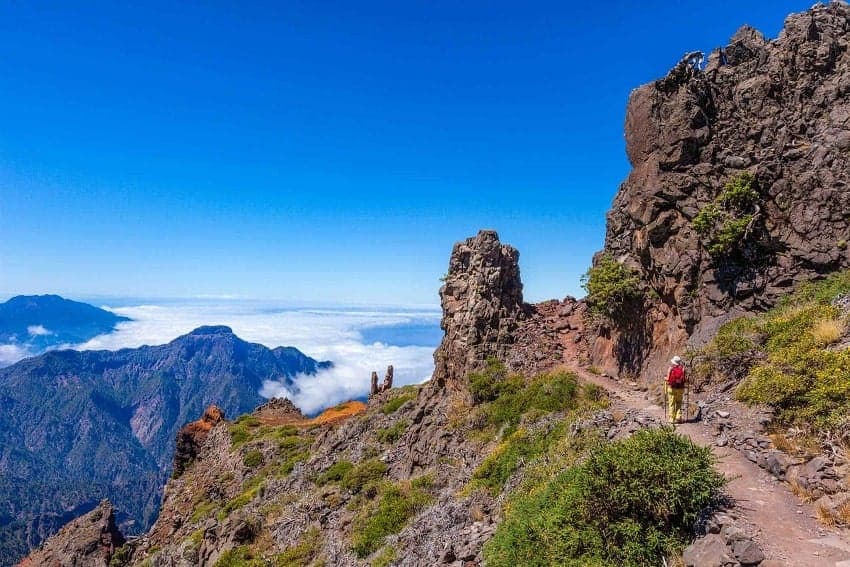
The island of La Palma offers breathtaking landscapes, remote beaches, imposing volcanoes, dense forests and incomparably starry skies.
With its 708 square kilometres, an elevation of 2.426m and its shape of a heart it is the most Western island of the Canary Island chain. Like every island in this archipelago, La Palma was created by volcanic activity. It is one of the youngest of the seven islands, dating back some 1.7 million years. The volcanic origin of La Palma is still clearly recognizable today, especially the southern part of the island with the dormant volcano Teneguía which last erupted in 1971, and offers interesting insights into its geological past.
The year-round mild climate with average temperatures between 18 and 27 degrees Celsius produce spring-summerlike weather as a result of the northeast trade winds.
This weather phenomenon is responsible for a pleasant subtropical climate and a rich green vegetation that prevails because of the humidity carried along in the trade winds. These moisture rich winds at certain times of the year also create a spectacular waterfall of clouds cascading down the central mountain faces and hence the nicknames Isla Verde – Green Island and Isla Bonita – Beautiful Island.
The unique geological structure of the island with its variety of vegetation zones and microclimates that are rarely found in the world on such a small area make this island a miniature universe. Each area of the island varies completely from another. In 1983 La Palma was declared a UNESCO biosphere reserve.
Another special feature of La Palma is the unique night sky. Due to its location in the Atlantic Ocean, sparse population, minimum light pollution and highest mountain peak Roque de los Muchachos 2.426m, the island was chosen as the location for one of the largest and modern observatories in the world.
The official population of the island is approximately 80,000 people. Traditional festivals such as the Bajada de la Virgen or Los Indianos carnival, famous far beyond the island’s borders, bear witness to the zest for life of the local people (Palmeros). Not only the geographical location, but also the numerous immigrants from Central and South America show a variety of Hispanic influences in island life, cuisine and cultural.
Read more...

